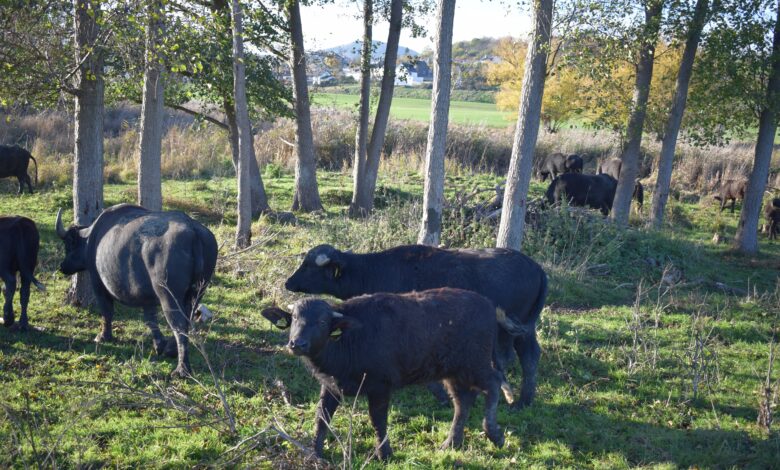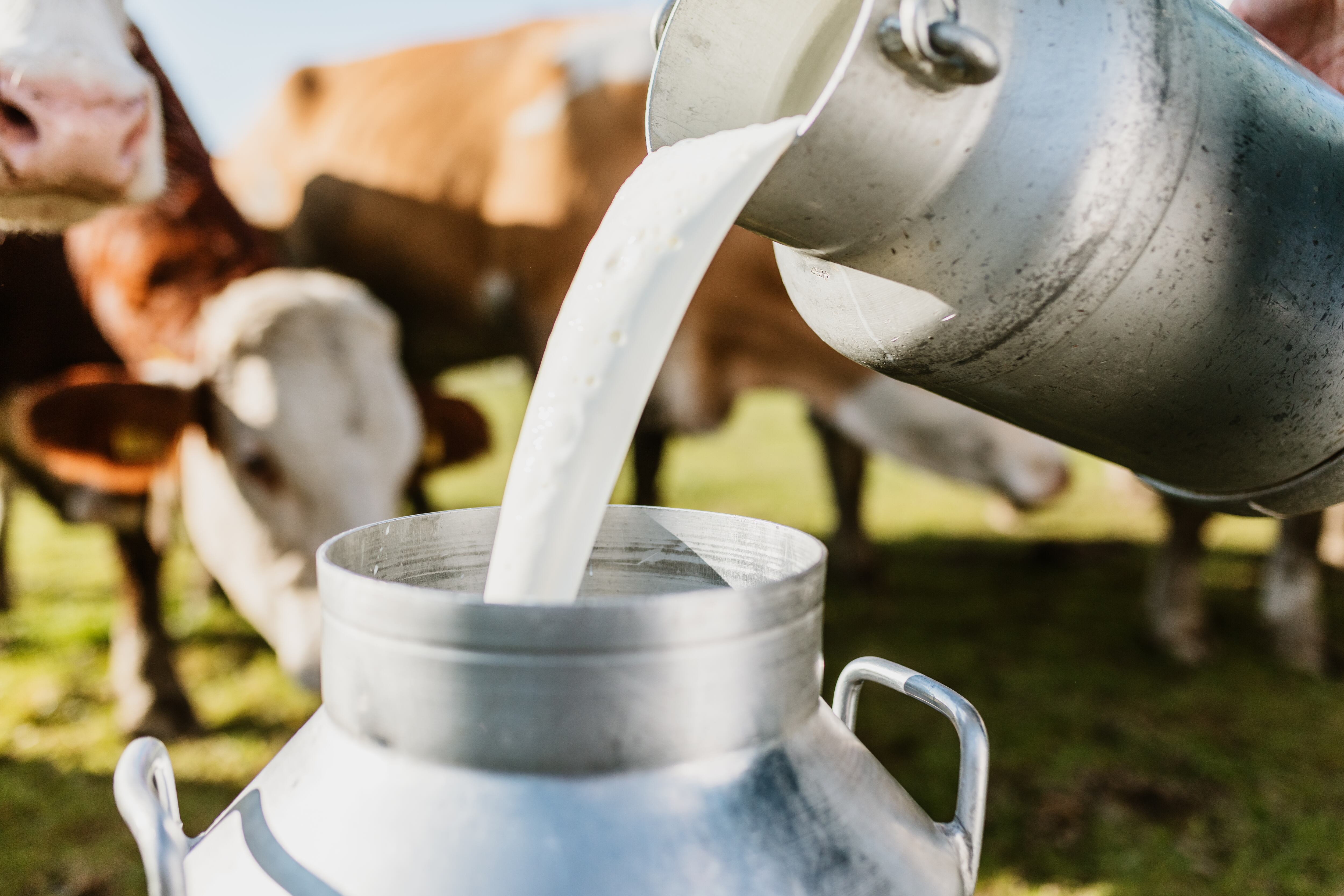Dire costs: Germany must contain foot-and-mouth disease

On 10 January, foot-and-mouth disease was found in a herd of water buffalo in Hönow, Brandenburg, just outside Berlin. It is the country’s first case in nearly four decades, and the first in the EU since it was found in Bulgaria in 2011.
Germany’s case has resulted in widespread fear among farmers, and a ban of imports from Germany in some countries, including the UK, Mexico and South Korea. Other countries, such as France, have also stepped up checks.
The disease has the potential to be catastrophic. Previous incidents have been costly, with an outbreak in the UK in 2001 putting the public sector back £3bn (€3.6bn), the private sector £5bn (€5.9bn), and leading to the slaughter of more than six million animals.
While it poses no risk to humans, the losses in animal life, as well as the economic losses, can be significant.
How is Germany responding?
The responsibility for combatting the outbreak lies at a state level, explains a spokesperson for Germany’s Federal Ministry of Food and Agriculture (BMEL).
The state of Brandenburg’s initial response has been to kill the affected animals and establish restricted zones.
Epidemiological investigations are currently being carried out to identify the disease’s origin and possible contact holdings, with the help of the country’s animal disease centre.
Livestock farms inside the restricted zones, as well as identified contact farms, are being investigated in order to pinpoint other points of contact so that necessary action can be taken.
“Currently, the main focus in the fight against foot-and-mouth disease lies on localising the disease, preventing its spread and eradicating it without leaving any residue. To achieve this, we have taken strict measures in accordance with EU-regulations,” the spokesperson explained.
How will it affect Germany’s exports?
Within the bloc, trade between other EU member states and areas of Germany unaffected by foot-and-mouth disease is still possible, under the principle of regionalisation.
This does not apply to countries outside the EU, who can ban imports from Germany and, in some cases, have done.
“In trade with third countries, we are doing everything we can to quickly enable exports to as many markets as possible. To this end, we are in contact with our trading partners and are campaigning for restrictions on barriers, consideration of safe processing methods and the regionalisation principle,” says the BMEL spokesperson.
It is clear any restriction in trade will have economic consequences, the BMEL confirmed.
Indeed, the German market may be affected by the outbreak. Certain by-products, such as tongues, are largely exported to other markets, predominantly in Asia, as they are not used much in Germany, explains Sandro Schulz, EMEA protein team lead at Expana. Exporting them can generate a profit. With exports being restricted, Germany may need to find new uses for them, such as in pet food.
However, the issue with this is that these internal markets don’t pay as much as the export markets. This leaves meat producers with two options: either take the loss and freeze the products for future use, or offset the price reductions with other meat categories.
This may not be a significant issue, depending on the progress of the outbreak. “It’s quite unlikely that we’re going to see large price moves on the meat side just by this short foot-and-mouth disease outbreak,” Schulz suggested. A longer outbreak would make the situation more tricky.
Timeline of a foot-and-mouth outbreak
The outbreak could follow several courses. Here’s how it might go.
Day 1 The first case is detected. Authorities respond by beginning efforts to contain outbreak.
Day 1-13 Trading partners respond. Restrictions are put in place and some ban imports from country where outbreak was detected.
Day 14 Maximum incubation period over. If no new cases since first case was discovered, restrictions begin to relax. If not, they stay in place.
Day 15+ If new cases appear, containment efforts continue. In the UK case, if an infected animal was found, all livestock on the farm in question were culled and burned, and the army were called in to aid these efforts.
Conclusion In the UK case, the country declared the outbreak over after no new cases had been detected for three months. There was a subesequent outbreak in 2007 but the disease was contained more effectively.
How will it affect Europe’s exports?
While the case poses a risk for European livestock, restrictions of exports from Germany arguably don’t put a direct strain on the EU’s overall output.
For example, the German share of the EU’s beef exports is quite small. In 2023, for instance, the EU exported 1.05m tonnes of beef, with only 0.03m tonnes of this, or 2.9%, coming from Germany. Within this, the EU exported 389,233 tonnes of live cattle, of which only 6,663 tonnes, or 1.7%, were from Germany.
Germany is a larger player in pigmeat, exporting 0.3m tonnes of the EU’s 4.1m tonnes in 2023, meaning it accounted for 7.3%. However, Germany’s share of the market has, according to Schulz, been reduced due to a decline in production following the Green Deal.
Finally, the EU exported 5.9m tonnes in dairy products in 2023, of which 1.2m, about a fifth, came from Germany. It is the biggest dairy producer in the EU – which is where a bigger foot-and-mouth disease outbreak could hit the country’s economy hardest.

The current case of foot-and-mouth disease will make exports more difficult in parts, even when sent to countries that have not banned imports from Germany outright.
For example, health certifications for meat and dairy are not regional, explains Schulz, and have simply stated in the past that Germany as a whole is free from foot-and-mouth disease. As this currently may no longer be the case, work is being done with export partners to get around this.
In the case of dairy, Germany exports around half of the dairy products it produces. Thus, because of the nature of health certifications, the dairy sector in particular is under strain from the outbreak.
As a consequence, some key trading partners, such as Italy, are diverting to other origins, like France and the Netherlands, for products such as skimmed milk concentrate.
Dairy not bought by other countries can be rerouted internally, explains Schulz, and dried into powders for use once Germany has regained it’s foot-and-mouth disease-free status.
When will we know the seriousness of the outbreak?
Currently, there is only one confirmed case. The incubation period for foot-and-mouth disease is between two and 14 days. This means that if no new cases are found within two weeks of the first case, things may begin to calm down.
A few weeks after this, products will be able to flow freely once more, explains Expana’s Schulz.
The economic impact will be limited unless case numbers begin to expand. So far, for instance, no significant impact has been seen on the spot market for pork or beef, yet further confirmed cases could change all this.
How quickly does the disease spread?
Foot-and-mouth disease is highly contagious and spreads rapidly, meaning that containing it is vital. It is found in all excretions and secretions of animals, including when they breathe out. The virus may also spread through contaminated animal products if fed to other animals.
The virus can lead to a far greater number of animal deaths than cases. For example, while 6 million animals were killed in the UK case, only 2,000 cases of the disease were actually found. In each single case, all of the livestock in that particular farm were killed and burned.
These methods are in response to the disease’s ability to spread rapidly. It is thought that by the time the first case was found in the UK, it had already spread to 57 farms around the country.


